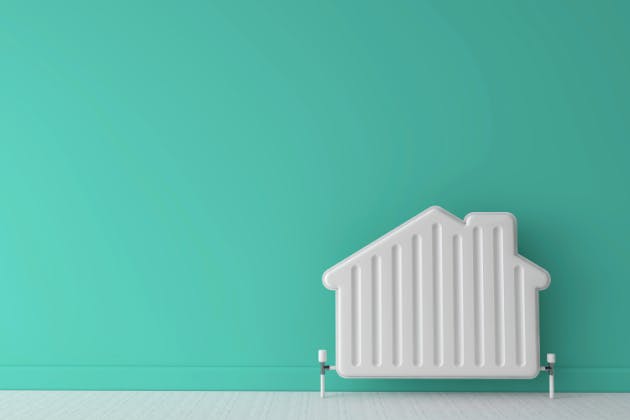Balancing your radiators is a simple but often overlooked task that can make a big difference to your home's comfort and energy efficiency. If some rooms feel colder than others, even with the heating on, your radiators might not be getting an even distribution of hot water. In this blog, we’ll guide you through what radiator balancing involves, why it's important, and how it connects to keeping your central heating system running smoothly.
What is radiator balancing?
Radiator balancing is the process of adjusting the flow of hot water to each radiator so they all heat up evenly. It doesn’t require any fancy tools, just patience and a little bit of care. When your heating system is unbalanced, radiators closest to the boiler tend to heat up much faster than those further away, leading to uncomfortable temperature differences across rooms.
This unevenness is not just inconvenient, it also makes your boiler work harder than it needs to. Whether you’ve recently had a boiler installation in Poole or your system is older and due for boiler servicing in Bournemouth, balancing ensures the boiler isn’t overexerting itself trying to heat distant parts of the home.

What You’ll Need to Balance Radiators
Before you begin, make sure you have:
- A radiator bleed key
- A digital or infrared thermometer (optional but useful)
- An adjustable spanner or lockshield key
- A notepad or smartphone to record temperatures
Step-by-Step: How to Balance Radiators
Bleed Your Radiators First
Before doing anything else, it’s essential to bleed all your radiators. Trapped air inside the system can prevent hot water from circulating properly, causing uneven heating and noisy pipes. Use a radiator bleed key to open the bleed valve slightly until you hear a hissing sound. Once water begins to trickle out steadily, close the valve. Repeat this process on every radiator throughout the property. Bleeding your system helps ensure accurate temperature readings during the balancing process and can often resolve minor heating inconsistencies on its own.
Turn Off the Heating
After bleeding, turn off your central heating and allow the radiators to cool down completely. This step creates a level starting point so you can observe which radiators heat up fastest from a cold state once the system is back on. Trying to balance a system while it’s hot can give you misleading results and make it harder to safely adjust valves, so patience here will pay off.
Turn On the Heating and Note the Order
Switch the heating back on and carefully monitor your radiators. The key here is to note the sequence in which they begin to heat up. Radiators closest to the boiler usually warm up first, while those furthest away tend to lag. Write down the order, as this will guide you when adjusting the valves. This step helps identify which radiators are receiving more hot water and which ones need better flow.
Adjust Lockshield Valves
The lockshield valve controls the amount of hot water that enters each radiator. It’s typically found under a plastic cap on one side of the radiator. Using an adjustable spanner or a lockshield valve key, you’ll begin to restrict or increase water flow. For radiators that heat up too quickly, gently tighten the valve by turning it clockwise. For those that are slower to warm, open the valve slightly by turning it anticlockwise. Make these adjustments gradually and keep testing the system. The aim is to balance the flow so that all radiators heat up at roughly the same rate, providing a consistent temperature across all rooms.
Monitor Temperatures
To fine-tune your adjustments, use a digital or infrared thermometer to measure the temperature of the pipes going into and out of each radiator. Ideally, you’re aiming for a temperature drop of around 10 to 12 degrees Celsius between the flow pipe (inlet) and the return pipe (outlet). This indicates that the radiator is dissipating heat efficiently and that hot water is being evenly distributed. If the temperature drop is too large or too small, adjust the lockshield valve accordingly until you reach the desired balance.
Why Balancing Radiators Supports Boiler Efficiency
Properly balanced radiators reduce strain on your central heating system. This means your boiler doesn’t have to run longer or work harder to compensate for cold spots. Whether you’re due a boiler service in Poole or considering a boiler replacement in Dorset, having a balanced system supports longevity and performance.
When to Call in a Heating Engineer
If your radiators still heat unevenly after balancing or you notice other issues like strange noises or cold patches, it could point to sludge build-up or pump problems. A professional heating engineer in Bournemouth or Poole can carry out a system flush or check your boiler’s performance. Routine boiler maintenance in Dorset can also help keep these issues at bay.
Looking for reliable heating and boiler support in Dorset, Poole, or Bournemouth?
Gold BoilerCare Ltd provides expert boiler servicing, maintenance, and central heating advice to help you stay warm all year round. Call us on 01202 944416 or fill out our contact form to arrange a visit from our friendly team.
